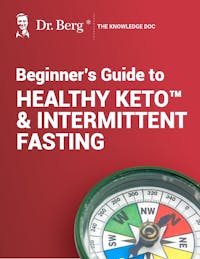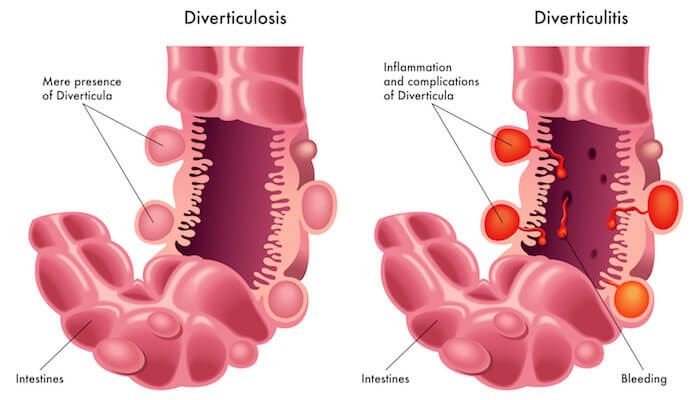Do I Avoid Seeds and Nuts with Diverticulitis

How to Read Your Body
Learn to recognize common symptoms and uncover their underlying health issues
Understand the signs of nutrient deficiencies to manage your health
Explore the four metabolic body types and the core factors that influence them
Interpret your body's signals from head to toe to identify potential health concerns

How to Read Your Body
Learn to recognize common symptoms and uncover their underlying health issues
Understand the signs of nutrient deficiencies to manage your health
Explore the four metabolic body types and the core factors that influence them
Interpret your body's signals from head to toe to identify potential health concerns

How to Read Your Body
Learn to recognize common symptoms and uncover their underlying health issues
Understand the signs of nutrient deficiencies to manage your health
Explore the four metabolic body types and the core factors that influence them
Interpret your body's signals from head to toe to identify potential health concerns

How to Read Your Body
Learn to recognize common symptoms and uncover their underlying health issues
Understand the signs of nutrient deficiencies to manage your health
Explore the four metabolic body types and the core factors that influence them
Interpret your body's signals from head to toe to identify potential health concerns

How to Read Your Body
Learn to recognize common symptoms and uncover their underlying health issues
Understand the signs of nutrient deficiencies to manage your health
Explore the four metabolic body types and the core factors that influence them
Interpret your body's signals from head to toe to identify potential health concerns

How to Read Your Body
Learn to recognize common symptoms and uncover their underlying health issues
Understand the signs of nutrient deficiencies to manage your health
Explore the four metabolic body types and the core factors that influence them
Interpret your body's signals from head to toe to identify potential health concerns

How to Read Your Body
Learn to recognize common symptoms and uncover their underlying health issues
Understand the signs of nutrient deficiencies to manage your health
Explore the four metabolic body types and the core factors that influence them
Interpret your body's signals from head to toe to identify potential health concerns

How to Read Your Body
Learn to recognize common symptoms and uncover their underlying health issues
Understand the signs of nutrient deficiencies to manage your health
Explore the four metabolic body types and the core factors that influence them
Interpret your body's signals from head to toe to identify potential health concerns

How to Read Your Body
Learn to recognize common symptoms and uncover their underlying health issues
Understand the signs of nutrient deficiencies to manage your health
Explore the four metabolic body types and the core factors that influence them
Interpret your body's signals from head to toe to identify potential health concerns

How to Read Your Body
Learn to recognize common symptoms and uncover their underlying health issues
Understand the signs of nutrient deficiencies to manage your health
Explore the four metabolic body types and the core factors that influence them
Interpret your body's signals from head to toe to identify potential health concerns

How to Read Your Body
Learn to recognize common symptoms and uncover their underlying health issues
Understand the signs of nutrient deficiencies to manage your health
Explore the four metabolic body types and the core factors that influence them
Interpret your body's signals from head to toe to identify potential health concerns

How to Read Your Body
Learn to recognize common symptoms and uncover their underlying health issues
Understand the signs of nutrient deficiencies to manage your health
Explore the four metabolic body types and the core factors that influence them
Interpret your body's signals from head to toe to identify potential health concerns

How to Read Your Body
Learn to recognize common symptoms and uncover their underlying health issues
Understand the signs of nutrient deficiencies to manage your health
Explore the four metabolic body types and the core factors that influence them
Interpret your body's signals from head to toe to identify potential health concerns

How to Read Your Body
Learn to recognize common symptoms and uncover their underlying health issues
Understand the signs of nutrient deficiencies to manage your health
Explore the four metabolic body types and the core factors that influence them
Interpret your body's signals from head to toe to identify potential health concerns

How to Read Your Body
Learn to recognize common symptoms and uncover their underlying health issues
Understand the signs of nutrient deficiencies to manage your health
Explore the four metabolic body types and the core factors that influence them
Interpret your body's signals from head to toe to identify potential health concerns

How to Read Your Body
Learn to recognize common symptoms and uncover their underlying health issues
Understand the signs of nutrient deficiencies to manage your health
Explore the four metabolic body types and the core factors that influence them
Interpret your body's signals from head to toe to identify potential health concerns

Beginner’s Guide to Healthy Keto & Intermittent Fasting
Receive a step-by-step guide to starting Healthy Keto® and intermittent fasting
Learn about foundational principles and best practices for beginners
Get detailed visual guidance on portion sizes and meal composition
Discover how to set achievable goals and monitor your progress
Find practical tips for overcoming common challenges and staying motivated

Beginner’s Guide to Healthy Keto & Intermittent Fasting
Receive a step-by-step guide to starting Healthy Keto® and intermittent fasting
Learn about foundational principles and best practices for beginners
Get detailed visual guidance on portion sizes and meal composition
Discover how to set achievable goals and monitor your progress
Find practical tips for overcoming common challenges and staying motivated

Beginner’s Guide to Healthy Keto & Intermittent Fasting
Receive a step-by-step guide to starting Healthy Keto® and intermittent fasting
Learn about foundational principles and best practices for beginners
Get detailed visual guidance on portion sizes and meal composition
Discover how to set achievable goals and monitor your progress
Find practical tips for overcoming common challenges and staying motivated

Beginner’s Guide to Healthy Keto & Intermittent Fasting
Receive a step-by-step guide to starting Healthy Keto® and intermittent fasting
Learn about foundational principles and best practices for beginners
Get detailed visual guidance on portion sizes and meal composition
Discover how to set achievable goals and monitor your progress
Find practical tips for overcoming common challenges and staying motivated

Beginner’s Guide to Healthy Keto & Intermittent Fasting
Receive a step-by-step guide to starting Healthy Keto® and intermittent fasting
Learn about foundational principles and best practices for beginners
Get detailed visual guidance on portion sizes and meal composition
Discover how to set achievable goals and monitor your progress
Find practical tips for overcoming common challenges and staying motivated

Beginner’s Guide to Healthy Keto & Intermittent Fasting
Receive a step-by-step guide to starting Healthy Keto® and intermittent fasting
Learn about foundational principles and best practices for beginners
Get detailed visual guidance on portion sizes and meal composition
Discover how to set achievable goals and monitor your progress
Find practical tips for overcoming common challenges and staying motivated

Beginner’s Guide to Healthy Keto & Intermittent Fasting
Receive a step-by-step guide to starting Healthy Keto® and intermittent fasting
Learn about foundational principles and best practices for beginners
Get detailed visual guidance on portion sizes and meal composition
Discover how to set achievable goals and monitor your progress
Find practical tips for overcoming common challenges and staying motivated

Beginner’s Guide to Healthy Keto & Intermittent Fasting
Receive a step-by-step guide to starting Healthy Keto® and intermittent fasting
Learn about foundational principles and best practices for beginners
Get detailed visual guidance on portion sizes and meal composition
Discover how to set achievable goals and monitor your progress
Find practical tips for overcoming common challenges and staying motivated

Beginner’s Guide to Healthy Keto & Intermittent Fasting
Receive a step-by-step guide to starting Healthy Keto® and intermittent fasting
Learn about foundational principles and best practices for beginners
Get detailed visual guidance on portion sizes and meal composition
Discover how to set achievable goals and monitor your progress
Find practical tips for overcoming common challenges and staying motivated

Beginner’s Guide to Healthy Keto & Intermittent Fasting
Receive a step-by-step guide to starting Healthy Keto® and intermittent fasting
Learn about foundational principles and best practices for beginners
Get detailed visual guidance on portion sizes and meal composition
Discover how to set achievable goals and monitor your progress
Find practical tips for overcoming common challenges and staying motivated

Beginner’s Guide to Healthy Keto & Intermittent Fasting
Receive a step-by-step guide to starting Healthy Keto® and intermittent fasting
Learn about foundational principles and best practices for beginners
Get detailed visual guidance on portion sizes and meal composition
Discover how to set achievable goals and monitor your progress
Find practical tips for overcoming common challenges and staying motivated

Beginner’s Guide to Healthy Keto & Intermittent Fasting
Receive a step-by-step guide to starting Healthy Keto® and intermittent fasting
Learn about foundational principles and best practices for beginners
Get detailed visual guidance on portion sizes and meal composition
Discover how to set achievable goals and monitor your progress
Find practical tips for overcoming common challenges and staying motivated

Beginner’s Guide to Healthy Keto & Intermittent Fasting
Receive a step-by-step guide to starting Healthy Keto® and intermittent fasting
Learn about foundational principles and best practices for beginners
Get detailed visual guidance on portion sizes and meal composition
Discover how to set achievable goals and monitor your progress
Find practical tips for overcoming common challenges and staying motivated

Beginner’s Guide to Healthy Keto & Intermittent Fasting
Receive a step-by-step guide to starting Healthy Keto® and intermittent fasting
Learn about foundational principles and best practices for beginners
Get detailed visual guidance on portion sizes and meal composition
Discover how to set achievable goals and monitor your progress
Find practical tips for overcoming common challenges and staying motivated

Beginner’s Guide to Healthy Keto & Intermittent Fasting
Receive a step-by-step guide to starting Healthy Keto® and intermittent fasting
Learn about foundational principles and best practices for beginners
Get detailed visual guidance on portion sizes and meal composition
Discover how to set achievable goals and monitor your progress
Find practical tips for overcoming common challenges and staying motivated

Beginner’s Guide to Healthy Keto & Intermittent Fasting
Receive a step-by-step guide to starting Healthy Keto® and intermittent fasting
Learn about foundational principles and best practices for beginners
Get detailed visual guidance on portion sizes and meal composition
Discover how to set achievable goals and monitor your progress
Find practical tips for overcoming common challenges and staying motivated
If you have diverticulitis, should you avoid eating seeds and nuts? This is another question that comes up often. It's an interesting one because, in the past, doctors used to recommend that people with diverticular disease stay away from all seeds, nuts, corn, and popcorn, as well as foods that have small seeds such as strawberries cucumbers, and tomatoes.
I'm going to help clear up some of the confusion surrounding this topic. But first of all, what is diverticulitis, and what are the symptoms?
In this article:

What is Diverticulitis (and Diverticulosis)?
Diverticulitis and diverticulosis are often confused. Diverticulosis is when tiny, bulging pouches (diverticula) develop in your digestive tract. The weak spots in your intestines push through areas in the outer lining. Then, the pressure causes them to bulge out—making little outpouchings. For the most part, diverticulosis happens in your colon.
Diverticulosis is very common in those over 60, but quite rare in those under 30. The actual cause of diverticulosis isn't well understood. Most researchers believe it's caused by strain (like with having a tough time passing stool, such as with constipation). In fact, populations with low-fiber diets tend to have more cases.
A fiber-rich diet and the avoidance of eating low-fiber foods such as red meat may help prevent further diverticula from forming. Gastroenterologists often recommend high-fiber foods. High-fiber intake will reduce strain and help with prevention.
Keep in mind that most of the time, this digestive disorder doesn't cause any significant problems. Up to 50% of North Americans and Europeans over 60 have diverticula in their colon. Yet few even know they do unless they have had a barium enema (a colon x-ray) or colonoscopy.
Symptoms of Diverticulitis
The inflammation associated with the diverticular disease can bring on some very unpleasant symptoms. You may experience abdominal pain that persists for several days. Usually, the pain starts in the lower-left side of your abdomen. Though it's rarer, it can also begin in the lower-right side.
You may experience nausea and vomiting. If you do, be sure to stay hydrated and see a doctor right away. Fever is another symptom to look out for with this disease. You could also have complications with bowel movements—problems with constipation or, in rare cases, diarrhea.
You may experience nausea and vomiting. If you do, be sure to stay hydrated and see a doctor right away. Fever is another symptom to look out for with this disease. You could also have complications with bowel movements—problems with constipation or, in rare cases, diarrhea.
Is It a Myth?
Will nut, seed, and popcorn consumption really contribute to diverticular disease? The answer is NO. Zero research shows that if you eat nuts, seeds, and popcorn, you will experience increased diverticula inflammation in the colon. Somehow, the misguided information got spread around that nuts and seeds will get lodged into diverticular pockets and contribute to the inflammation. It's a total myth.
In fact, some research shows that those who eat more nuts and seeds are at an even lower risk for the disease. You'll be much better off if you don't avoid seeds while dealing with diverticulitis.
What is the Real Cause of Diverticulitis?
The real cause of diverticulitis is when you eat a diet full of inflammatory foods. If your diet is full of grains like bread, pasta, cereal, and crackers, you're much more likely to develop the diverticular disease. Why? Because these are foods that promote gastrointestinal inflammation.
Other things that promote inflammation are sugar, vegetable oils (think corn oil and soy oil added to salad dressings), and foods with too much omega-6 fatty acid. Avoid these foods and not only will you reduce your chances of developing acute diverticulitis, but you'll also experience a wide range of health benefits.

Best Diverticulitis Remedies
So now you know that the root of the diverticular disease has to do with poor dietary decisions. Nuts and seeds aren't the problems when it comes to diverticula inflammation. Grains, sugars, and unhealthy oils are real problems. Aside from avoiding these foods, I recommend three things for this condition.
Chlorophyll-
chlorophyll is a healer of the colon, which is where diverticulitis most often occurs. You can find chlorophyll in leafy green vegetables such as spinach, kale, and collards. Wheatgrass juice powder is also fantastic for increasing your chlorophyll intake.
Cabbage -
another vegetable you should be eating if you have diverticulitis is cabbage. Cabbage has many vitamins and minerals. You can have cabbage in just about any form—sauerkraut, kimchi coleslaw, or just plain—and it will benefit your colon.
Fermented veggies -
any vegetables that are fermented will help restore your gut microbe health. Why is this important? Well, a lot of the time, diverticulitis happens after being on antibiotics. Antibiotics can
kill off healthy gut microbes, which the gut needs to function properly. Things like yogurt, sauerkraut, fermented pickles, kimchi, kombucha, and kefir will help you restore your gut health and reduce inflammation.
One last thing I'd like to mention is that Fat Storing Hormone resistance can bring on diverticulitis. The best way to combat this is by going on a ketogenic diet. Keto will not only help with Fat Storing Hormone resistance, but it will also reduce inflammation and help keep your gut healthy.
I hope this information helps. Give some of these tips a try and see how they work for you.
Up Next:
Previous blog
Does Chocolate Have Caffeine?Tags

Popular
08/21/2024
40.4K views
05/22/2024
36.9K views
08/19/2024
215.2K views
03/18/2024
11/21/2022




